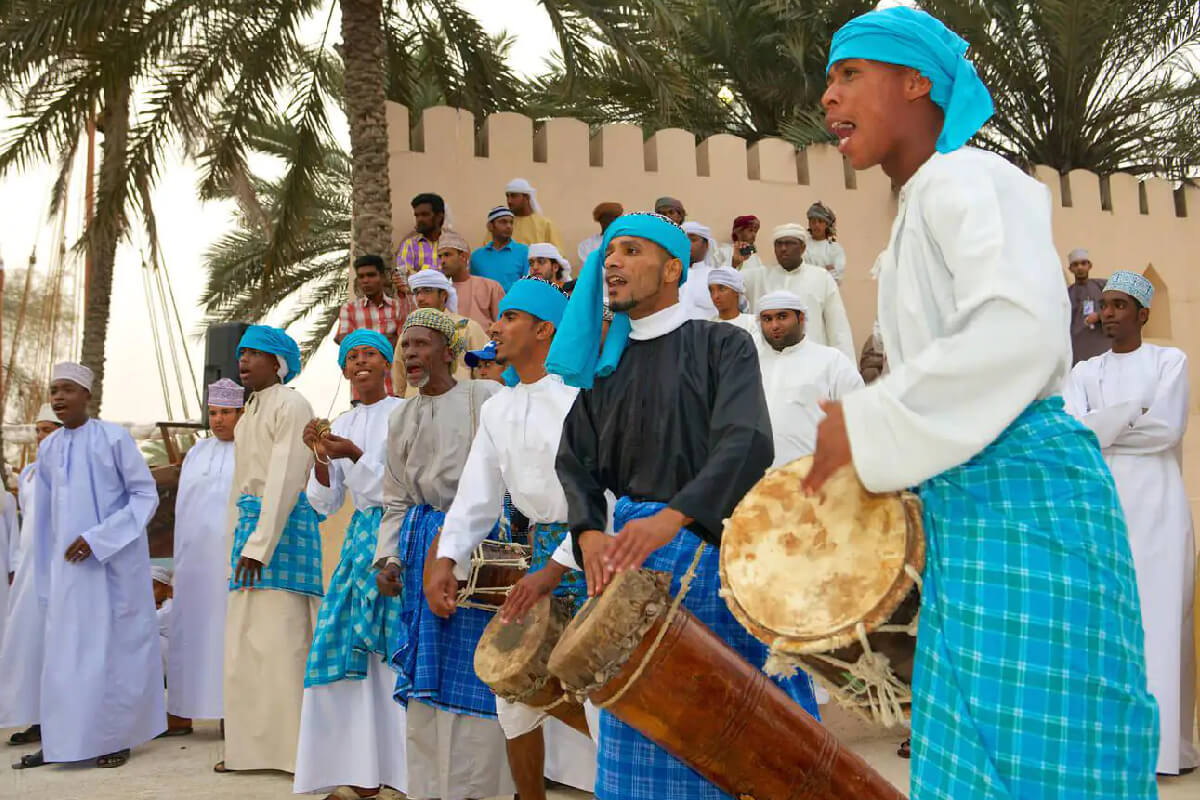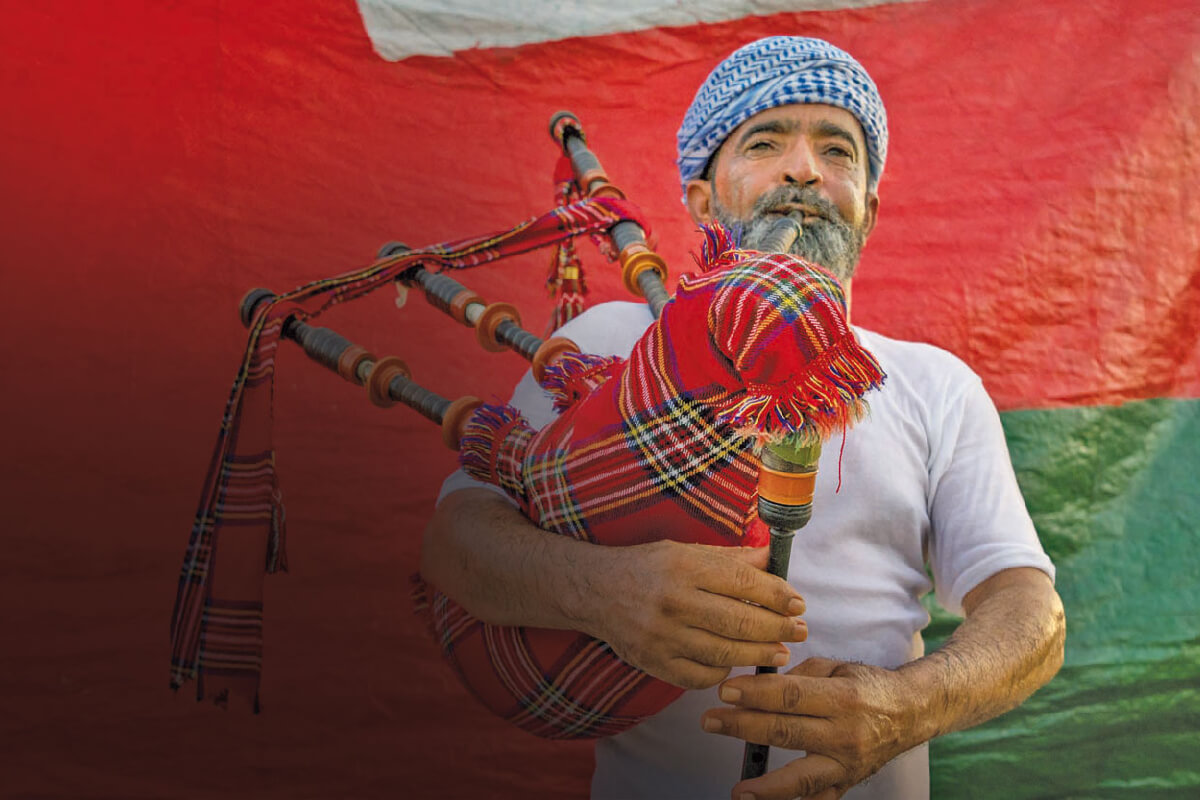Oman, a land rich in history and culture, has a deep-rooted musical and artistic heritage that reflects the soul of its people. Traditional music and dance in Oman serve as a means of storytelling, social connection, and national pride. Passed down through generations, these art forms play an essential role in celebrations, religious events, and daily life.
Together with True Oman Tours explores the fascinating world of Traditional Music & Art in Oman, offering a detailed look into the country’s most iconic musical expressions.
Introduction to Oman Traditional Music, Dance and Instruments
Oman, a land of breathtaking landscapes and a rich cultural heritage, has a deep-rooted tradition of music and dance that has been passed down through generations. Traditional music and art in Oman are closely intertwined with the country’s history, reflecting the influences of Arabia, Africa, Persia, and the Indian subcontinent. These artistic expressions play a significant role in Omani society, accompanying religious rituals, festive occasions, and daily life.
Oman’s unique geographical position along historical trade routes contributed to the development of a diverse musical culture. The country’s music is deeply tied to its people, serving as a means of storytelling, expression, and community bonding. With over 130 identified traditional music styles, Oman’s folk music encompasses a wide range of themes and emotions. From the rhythmic beats of Bedouin drumming in the desert to the melodic sea chants of coastal communities, the country’s traditional sounds reflect its diverse customs and history.
Traditional Omani dances, often performed alongside folk music, enhance the musical experience by combining movement and rhythm to narrate stories of love, bravery, and everyday life. This article explores the enchanting world of Omani folk music, traditional instruments, and dance, shedding light on how these art forms remain an integral part of the country’s cultural identity.
Oman Folk Music

Omani folk music is a vast and complex tradition that varies across regions, influenced by the country’s geography, history, and interactions with neighboring cultures. Folk music serves different purposes, from entertainment and storytelling to religious devotion and labor songs. Below are some of the most significant categories of Omani folk music:
Maritime Songs
As a seafaring nation with a long coastline along the Arabian Sea, Oman has a rich tradition of maritime songs. These songs, known as Shubani and Nashid Al-Bahar, were historically sung by fishermen and sailors to coordinate rowing, hauling fishing nets, and other sea-related activities. The rhythms mimic the motion of the waves, creating a strong connection between the music and the seafarers’ daily lives. Many of these songs also include chants asking for safe voyages, praising the sea, and recounting maritime legends.
Desert and Bedouin Songs
In the vast desert regions of Oman, the Bedouin tribes have preserved their own musical heritage. Bedouin folk music is often poetic, with lyrics that tell tales of nomadic life, love, and hardship. The melodies are simple yet deeply emotional, usually accompanied by hand clapping or the rhythmic beats of a frame drum known as the Duff. These songs serve as a way to pass down oral history and cultural values from one generation to the next.
Religious and Spiritual Songs
Religious and spiritual music holds a special place in Omani culture. Al-Madih, a form of Islamic praise song, is performed during religious ceremonies and special Islamic occasions such as Mawlid (the birthday of the Prophet Muhammad). These chants are typically performed a cappella or with minimal instrumentation, focusing on the spiritual message rather than musical complexity. Sufi-influenced music is also present in Oman, with mystical chants and rhythms that aim to create a meditative and devotional atmosphere.
Festive and Celebratory Songs
Omani folk music also plays a major role in weddings, national celebrations, and other communal gatherings. Many traditional Omani wedding songs feature a call-and-response style, where a lead singer performs a line and the group responds in unison. Instruments such as the Oud, drums, and flutes are used to enhance the celebratory atmosphere. Each region of Oman has its own unique wedding songs and traditions, reflecting the diversity of the country’s cultural landscape.
Oman Traditional Music Instruments
The instruments used in Oman’s traditional music contribute to its distinctive sound. Many of these instruments have been used for centuries and are deeply embedded in Omani culture.

Drums
Drums are a fundamental part of Omani music, providing rhythmic structure and energy to performances. The Tabel (large drum) and Ranna (small drum) are among the most commonly used percussion instruments. These drums are typically made from animal skin stretched over wooden frames and are played with sticks or hands to produce dynamic rhythms. Different types of drumming patterns are used depending on the type of performance, from slow, ceremonial rhythms to fast-paced beats for dance performances.
Oud
The Oud is a pear-shaped string instrument similar to the lute. It is widely used across the Arab world and is essential in Omani music, providing a deep, resonant sound that adds melody and harmony to folk songs. Skilled Omani musicians use the Oud to create intricate musical compositions, often accompanying poets and singers in traditional storytelling performances.
Qanun
The Qanun is a traditional Middle Eastern zither played by plucking the strings with a pick. It is often used in classical and folk compositions to create intricate melodic patterns. The instrument’s delicate and ethereal sound adds a layer of refinement to Omani musical performances.
Rababa
The Rababa is a simple, single-stringed bowed instrument used in Bedouin and folk music. It is commonly played by poets and storytellers to accompany recitations. Its hauntingly beautiful tones add a sense of nostalgia to Omani desert music.
Surnai (Omani Flute)
The Surnai is a wind instrument similar to an oboe, producing high-pitched melodies that are often played in celebratory or religious contexts. It is often heard in traditional Omani dance performances, adding a lively and festive touch to the music.
Oman Traditional Dance

Omani traditional dance is an integral part of the country’s cultural heritage. It is performed at weddings, festivals, and national events, showcasing the country’s identity and traditions.
Al-Bar’ah
Al-Bar’ah is a famous sword dance performed in the mountainous Dhofar region. Dancers hold swords and move rhythmically to the beat of drums while performing intricate footwork. This dance symbolizes bravery, strength, and the warrior spirit of Omani men.
Razha
Razha is a traditional Omani war dance where performers wield swords and shields, reenacting battle movements. It is accompanied by chanting and poetry and is often performed during national celebrations.
Al-Azi
Al-Azi is a poetic performance rather than a dance, where groups of men stand together, recite poetry, and move in unison while raising their hands. This performance is deeply rooted in Omani heritage and is recognized as UNESCO Intangible Cultural Heritage.
Sharh
Sharh is a popular folk dance performed mainly in Dhofar. It involves fast-paced movements and is usually accompanied by drumming and singing. This dance is often seen at wedding celebrations and cultural festivals.
Liwa & Fann At-Tanbura
Influenced by African musical traditions, Liwa and Fann At-Tanbura are energetic dances performed in Oman’s coastal areas. These dances involve rhythmic drumming, singing, and vibrant movements.
Conclusion
Oman’s traditional music and dance are deeply intertwined with the nation’s history and identity. Whether through the soulful melodies of the Oud, the powerful beats of traditional drums, or the mesmerizing movements of folk dances, these art forms continue to thrive in modern Oman. They are not just performances but living traditions that connect generations, preserving the rich cultural heritage of this extraordinary country.


0 Comment